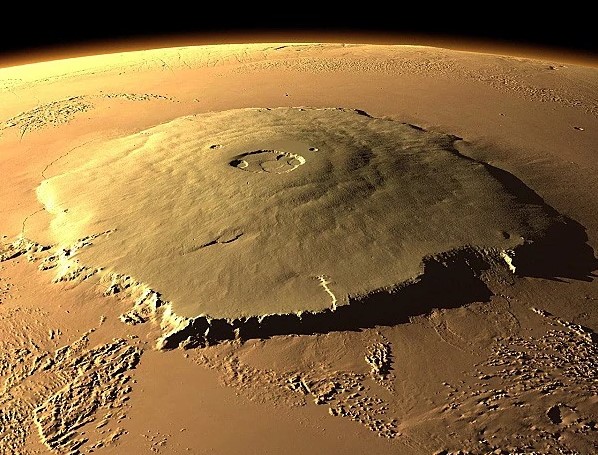
What is the tallest a mountain can be? It depends on the strength of the surface gravity, the amount of volcanic activity, the movement of tectonic plates, and the weather.
The highest mountain on Earth is Mount Everest at 8,848 meters high. Technically Mauna Kea in Hawaii is the tallest mountain if you measure from the base to the peak. It is 10,210 meters, but only about 4,000 meters of it are above the sea. I am looking at how tall a mountain can be above sea level. The highest mountain in our solar system is the 21,229m Olympus Mons on Mars. That makes it more than 2.5 times taller than Mt. Everest.
So, why isn’t Mt Everest the same size as Olympus Mons? What is the tallest a mountain can be? On Earth, Mt. Everest is pretty much the limit for a mountain. There are four things that limit stop it from getting any taller. The biggest limiting factor is the gravity of the planet.
Most things in the universe have a mass and they also have a weight. Their mass doesn’t change, but their weight changes according to the gravity they are experiencing. For example, my mass is constant no matter where I go, but I weigh more if I stand on Jupiter and less if I stand on the moon because the gravity in each place is different. Mt. Everest has a mass of about 175,000,000,000,000 kgs. The mass of Everest is being pulled down by the gravity of the Earth giving it an enormous weight. Mountains are usually formed by plate tectonics. Two plates collide and one plate is pushed upwards, creating a mountain. Those plates have a huge amount of force, but as the mountain gets bigger it gets heavier. There is a point where the mountain weighs so much that the plates cannot push it up anymore. Everest has reached that limit. Mars is smaller than Earth and consequently has a weaker gravity. The gravity is 38% that of Earth. That means, if a mountain formed in the same way on Mars, it could be expected to grow to 23,284 meters, which is about the height that Olympus Mons has reached. Conversely, a rocky planet much larger than Earth would have a higher gravity and the mountains wouldn’t be as tall as the ones we have here.
The second thing is the amount of volcanic lava and the movement of the tectonic plates. Mt. Everest is a mountain created by tectonic plates, but Mauna Kea in Hawaii is a mountain created by lava. It is called a shield volcano, which means that it constantly erupts a very fluid type of lava, that flows down, hardens, and gradually makes the mountain bigger. Olympus Mons is also a shield volcano, but it has been able to grow so massive because Mars doesn’t have tectonic plates. On Earth, a volcano like this wouldn’t be able to keep growing because our tectonic plates would slowly move it away from the source of its lava. The crust of Mars isn’t divided up into tectonic plates, so the mountain has remained over the source of the lava for millions of years and just kept growing.
Olympus Mons is not just tall; it is incredibly wide. The slopes rise at about 5% and it would be a walk of about 40km from the edge of the mountain before you reached the top. In fact, you would not be able to see the mountain if you stood at the bottom and you would have no idea you were standing on a mountain if you were at the top. The mountain is so massive, that if it were here on Earth, it would be about the same size as Poland.
The third limiting factor is the weather. Mountains are subject to weather erosion. Cycles of hot and cold weather create cracks in the mountain that get larger over time. The wind blows at the mountain and wears it down. Rain falls on the mountain creating rivers that erode the mountain. As mountains get taller, they are subject to more erosion, which limits their height. Olympus Mons isn’t subject to the same weather erosion as here on Earth, but Mars does have very strong winds and dust storms, so the mountain will undergo erosion.
NASA’s Mars Express orbiter in 2004 showed that some of the most recent lava flows were within the last 2 million years. It is very likely that the volcano is still active. I wouldn’t mind a vacation there.
So, what is the tallest a mountain can be? Mt. Everest is probably at the upper limit of how tall a mountain can be here on Earth because of gravity, our tectonic plates, and our weather. If you change any of those variables then you can have taller mountains, such as Olympus Mons on Mars. And this is what I learned today.
Sources
https://www.livescience.com/how-tall-can-mountains-get.html
https://en.wikipedia.org/wiki/Mauna_Kea
https://www.ck12.org/earth-science/weathering-and-erosion/rwa/why-isnt-olympus-mons-on-earth/
